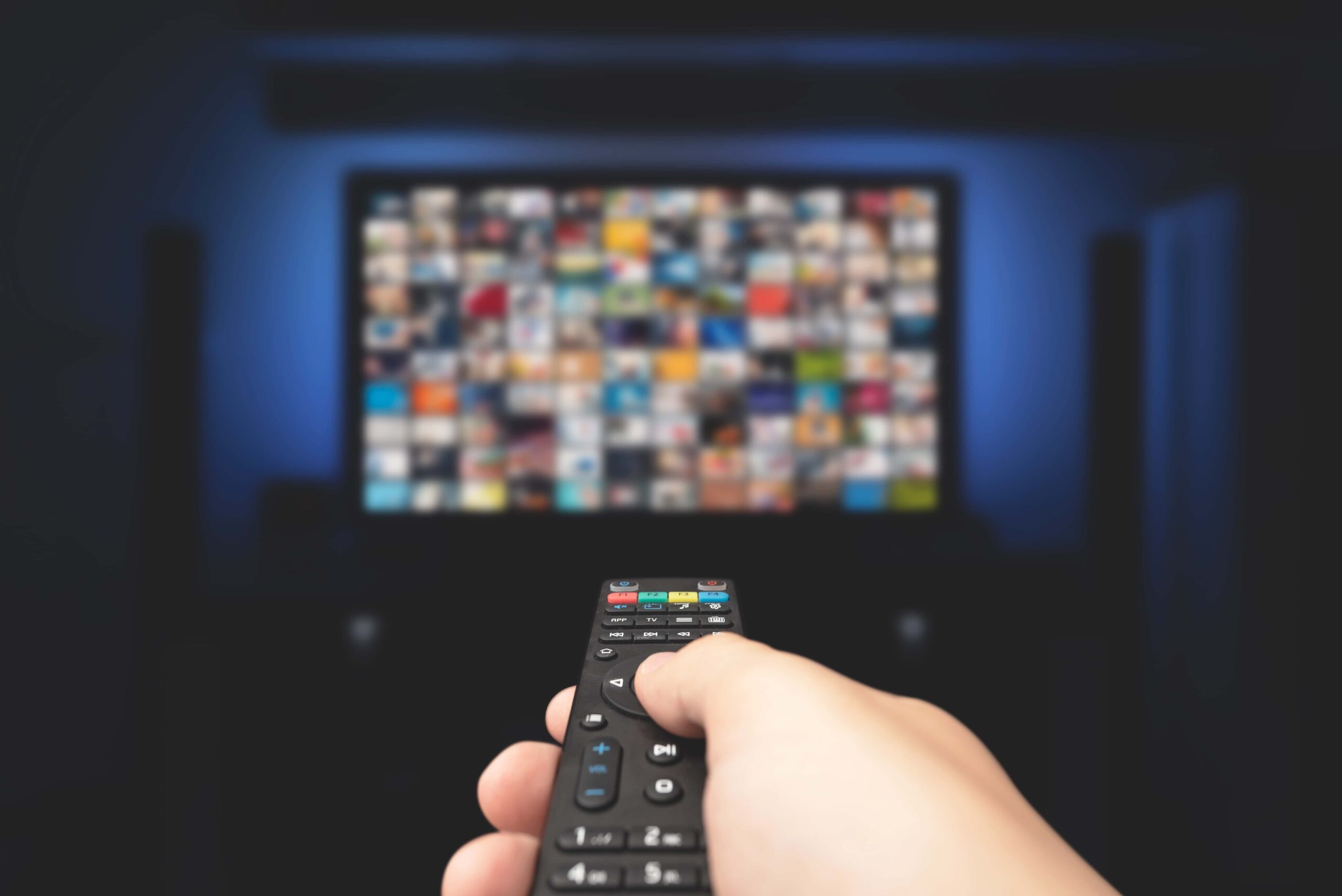4K Streaming Guide
Learn the basics of 4K video streaming before signing up for a new streaming service.
Aug 19, 2025 | Share
Streaming Guides
You need to watch TV and movies in 4K to get the ultimate experience, right? Or is it 8K now? What about UHD? Seriously, what a headache. With media companies racing to offer the best in online video, finding the highest quality picture is like aiming at a constantly moving target.
If you’re not up to speed with the cutting edge of online video, here’s what you need to know to stream 4K content from Netflix, Hulu, HBO Max, YouTube TV, and similar services.
Want the smoothest 4K experience?
You’ll need a fast plan to stream more than one 4K video simultaneously. Enter your zip code below to see what’s available in your area.
On this page:
What is 4K streaming? | How much speed do you need? | How much data do you need? | What else do you need? | Do you really need 4K? | What about 8K video? | FAQ
On this page:
What is 4K streaming?
You stream in 4K when you watch any video with a 3,840 x 2,160 resolution distributed by Netflix, YouTube, HBO Max, and similar services. The video downloads in small chunks that are played immediately and then deleted.
Most streaming services currently offer 4K as the highest resolution option. In fact, most original content from services like Amazon Prime Video and Disney+ is available in 4K, and that trend is likely to continue.
But not all content is available in 4K. When streaming video, the resolution depends on the device, the service, your internet connection, and the video’s native resolution. There are a lot of different resolutions you’re likely to see, so take a look:
| Resolution | Formal name | Size in Pixels | Examples |
|---|---|---|---|
| 6480p (12K) | 12K Ultra High Definition (UHD or Ultra HD) | 12,288×6,480 | Very highest consumer cameras |
| 4320p (8K) | 8K Ultra High Definition (UHD or Ultra HD) | 7,680×4,320 | YouTube, PS5, Xbox Series X |
| 2160p (4K) | 4K Ultra High Definition (UHD or Ultra HD) | 3,480×2,160 | Most streaming services, 4K Blu-ray |
| 1440p (2K) | Quad High Definition (QHD or Quad HD) | 2,560×1,440 | QHD monitors, smartphones |
| 1080p (FHD) | Full High Definition (FHD or Full HD) | 1,920×1,080 | Blu-ray, HDTV, Xbox |
| 720p (HD) | High Definition (HD) | 1,280×720 | Preferred Twitch streaming resolution |
| 480p (SD) | Standard Definition (SD) | 640×480 (4:3) | TV broadcasts, NTSC-region DVD |
| 480p (SD) | Standard Definition (SD) | 720×480 (3:2) | TV broadcasts, NTSC-region DVD |
| 360p (SD) | Standard Definition (SD) | 640×360 | Low-quality video |
How much speed do you need for 4K streaming?
The internet speed you need to stream a 4K video depends on how it’s compressed and delivered across the internet—raw video is just huge, so it must be packed like a zip file before it’s sent to you. A rate of 25 Mbps is average for a single 4K stream, so if you have a 100 Mbps plan, the stream uses a quarter of your entire bandwidth.
But if three other household members decide to watch 4K content too, you’ll hit the plan’s 100 Mbps limit and leave nothing else for other devices and applications. We suggest a plan that’s faster than 100 Mbps if this scenario applies to you—a fast upload speed doesn’t matter in this case.
Bandwidth isn’t your only requirement, however.
How much data do you need for 4K streaming?
You download video data in small chunks each time you stream, so you can easily burn through a month’s worth of data if your internet provider enforces a monthly data cap, like Xfinity and Mediacom. You may end up with overage fees that cost more than the service you use to stream video.
So, how much data does a 4K stream use? Nearly 16 GB per hour if you stream from YouTube, but only 7 GB per hour if you stream from Netflix. Again, the amount of data you use depends on the platform, but you’ll use less data streaming a 4K movie than if you bought the movie and downloaded it to your device—Avengers: Endgame reaches up to a hefty 105 GB!
Here’s a chart with the average per-hour download amounts to give you an idea:
| Format | Amount per hour |
|---|---|
| 4K UHD | 7,200 MB (7.2 GB) |
| Quad HD | 3,000 MB (3.0 GB) |
| Full HD | 1,500 MB (1.5 GB) |
| HD | 900MB |
| SD | 700MB |
Satellite internet connections have especially restrictive data caps, so it’s often better to have a separate satellite TV provider to watch video. Most other connections give you enough data to stream on a fairly regular basis, but we suggest getting an unlimited data plan for true stress-free streaming.
For more information, see our guide to speed requirements for streaming services.
Looking for an internet plan that can handle 4K video?
Most plans provide enough internet speed for you to stream a few 4K videos simultaneously without interruption. But if your 4K stream constantly buffers, you may need a faster plan. See what’s available in your area.
What else do you need for 4K streaming?
To stream 4K video, you need two things: a 4K device and a 4K streaming service.
4K streaming devices
First, you need devices that support 4K. We can split these devices into two groups: 4K output and 4K input.
4K input
You need a screen that supports a 4K resolution. It can be a smart TV, a desktop monitor, or a laptop screen. Most phones and tablets don’t have a resolution that high, but you can get a good 4K TV fairly cheap. Here are a few examples:
| TV | Size (in inches) | Price* | Get it |
|---|---|---|---|
| Amazon Fire TV 4-Series | 43 | $329.99 | View on Amazon |
| TOSHIBA 43" Class C350 | 43 | $299.99 | View on Amazon |
| SSamsung 43-Inch Class Crystal UHD U8000F | 43 | $267.99 | View on Amazon |
| Hisense 43" Class QD6 Series | 43 | $197.99 | View on Amazon |
* Amazon.com prices (as of 08/19/2025). See disclaimer.
4K output
This group consists of devices that receive the 4K video from the internet and relays it to a 4K screen. Here are a few examples to get you started:
| Device | Price* | Get it |
|---|---|---|
| Google TV Streamer 4K | $92.20 | View on Amazon |
| Apple 2022 Apple TV 4K Wi‑Fi with 64GB Storage (3rd Generation) | $135.49 | View on Amazon |
| Amazon Fire TV Cube | $139.99 | View on Amazon |
| NVIDIA SHIELD Android TV Pro Streaming Media Player | $199.99 | View on Amazon |
| Roku 3920RW-SW Premiere | $89.99 | View on Amazon |
| TiVo Stream 4K | $34.99 | View on Amazon |
* Amazon.com prices (as of 08/19/2025). See disclaimer.
4K streaming services
Once you have the equipment you need to stream and watch 4K video content, the next step is to get a compatible streaming service. Most have some 4K offerings, though these sometimes come at an extra cost.
For example, Netflix customers need the premium plan to watch 4K content. Amazon Prime Video has many 4K shows, but some are available only to rent or buy. Other services, such as Disney+, Hulu, and Starz, include their 4K content in standard monthly subscriptions.
Do you really need 4K?
You don’t need 4K, but it certainly looks a lot better than SD and HD resolutions. A 4K video has sharper edges, less noise, and better colors. If you want the ultimate viewing experience, 4K is the way to go—for now.
If you’re upgrading your TV or some other streaming device, you should definitely get something that supports 4K video. There’s enough 4K content out there already to make upgrading worth it, and most new TV shows and movies moving forward will be available in 4K.
On the other hand, if you’re on an internet plan with low data caps, you might not want to watch content in 4K, even if your device can handle it. Most streaming services automatically choose the highest resolution available based on your connection speed, but this can usually be manually set to a lower resolution, making your data last much longer.
What about 8K video?
4K video is still cutting-edge technology, but 8K is the next level. You can already find 8K televisions on the market, but there’s no need to upgrade just yet. Most streaming services don’t have 8K content, nor can you purchase and stream 8K content from Google Play and the iTunes Store.
However, YouTube does have some 8K content, but that’s mostly a handful of scenic landscape flyovers and peaceful nature videos. They’re great proof-of-concept videos but probably not worth shelling out several thousand dollars for new equipment.
Some newer game consoles like the PlayStation 5 and the Xbox Series X also support 8K content, but they’re similarly limited by the lack of available 8K games and video.
Do you have the speed you need for 4K streaming?
If you’re having issues with 4K streaming but you don’t know the speeds you’re currently getting, run our speed test from a wired device. If your tested speed matches your plan, you may need a plan with a faster speed.
Download speed
000 Mbps
Upload speed
000 Mbps
Latency (ping)
00 ms
Jitter
00 ms
FAQ about 4K streaming
What does 4K mean?
What’s the difference between 4K and UHD?
How much data does 4K streaming use?
Why is 4K resolution 2160p?
What does the “p” mean in 2160p?
What does NTSC mean?
What are the best internet service providers for streaming in 4K
Disclaimer
Amazon.com Price (as of 07/29/25 10:37 MST). Product prices and availability are accurate as of the date/time indicated and are subject to change. Any price and availability information displayed on Amazon.com at the time of purchase will apply to the purchase of this product. HighSpeedInternet.com utilizes paid Amazon links.
Author - Chili Palmer
Chili Palmer covers home tech services, with a special focus on understanding what families need and how they can stay connected on a budget. She handles internet access and affordability, breaking news, mobile services, and consumer trends. Chili’s work as a writer, reporter, and editor has appeared in publications including Telecompetitor, Utah Business, Idaho Business Review, Benton Institute for Broadband & Society, and Switchful.com.
Editor - Jessica Brooksby
Jessica loves bringing her passion for the written word and her love of tech into one space at HighSpeedInternet.com. She works with the team’s writers to revise strong, user-focused content so every reader can find the tech that works for them. Jessica has a bachelor’s degree in English from Utah Valley University and seven years of creative and editorial experience. Outside of work, she spends her time gaming, reading, painting, and buying an excessive amount of Legend of Zelda merchandise.




